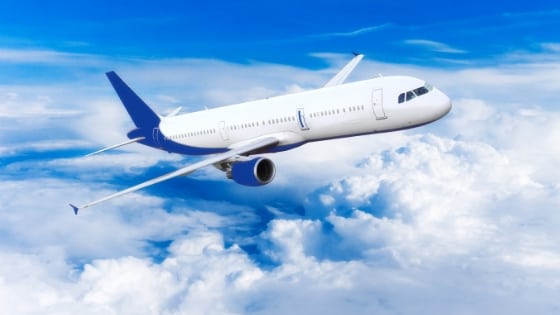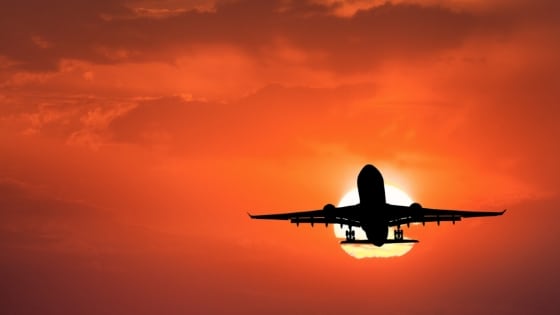
Where Does Airplane Waste Go And What Is Quarantine Waste In Australia? ✈️
Where Does Airplane Waste Go? ✈️: If you are like me, you hate using plastic utensils, coffee cups or plastic packaging that is single-use which, more often than not, ends up in the trash. In your own home and business, you can influence how much plastic is used but not when sitting on an airplane. You very well may ask yourself, “where does airplane waste go once it has been finished with?”
>Download Now: Free PDF Business Owners Guide To General Waste Bin Services
When you are on a long haul flight, mealtime is one of the few things that can break up the never-ending drudgery. Whether you complain about the lack of flavour in the food or just comfort eat to escape boredom, it would be good to know where the airplane waste goes once the plane lands.
In today’s blog, we will look at the facts and figures concerning this question. We will also look at the issues of quarantine waste in Australia.
About Waster
At Waster, we provide low-cost waste and recycling services such as garbage disposal to small and medium Aussie companies. I have to admit that we do not have any airlines or airports as customers! Instead, we are more focused on offices, medical practices, cafes, factories, restaurants etc.
However, we do often look at quarantine waste (i.e., waste that has come in from overseas either in cargo, planes or ships).
Our main differentiator is our customer service and our flexible 30-day agreements. We provide all services you may require from general waste to sanitary bins. As we do not operate landfills, we are aligned with you in seeking to reduce dumping at landfill and save you money as recycling is a great way to cut costs and focus your finances more on business operations.
If you require waste and recycling services for your business, you can press the blue button below to check all our bin options and prices. You can even book online today!
So, where does airplane waste go then?
The sad reality is that the vast majority of waste that is taken off of airplanes that come into Australia goes and ends up in a quarantine landfill. A quarantine facility is one that has strict legislation from the local EPA.
This legislation will dictate how the waste has to be stored and transported from the collection location (i.e., from the airport to the landfill). It will also dictate which roads the trucks can drive on and will seek to avoid agricultural land and animals, etc.
This is, of course, because of the unique habitat in Australia and the need to protect it. This is one of the reasons why Australia does not import as much fruit as other countries. And, this is why, say, banana prices can be very volatile in Australia.

How much waste does air traffic produce?
The IATA explains:
“The average passenger generates 1.4 kilograms of waste per flight, according to the International Air Transport Association (IATA).”
“In 2017, the total amount of passenger waste was 5.7 million tonnes, IATA says. This figure includes toilet waste, but the bulk of it is paper, cardboard and plastic.”
“For flights landing in Australia, New Zealand, Europe and the United States, waste is often incinerated because of the risk of transmission of animal diseases.”
Because of the strict rules in Australia, pretty much everything goes to quarantine landfill.
IATA also classified airplane waste as cabin waste. And, cabin waste can be split into two main streams, which we will discuss below:
1. Cleaning waste
The first of the two main cabin waste streams is cleaning waste. IATA defines it as leftover rubbish that comes from the aircraft given to passengers such as newspapers, paper towels, plastic bottles, plastic wrapping from different comfort-providing items such as pillows, blankets and headsets, amenity kits, and dropped food on the floor.
Cleaning waste also includes medical waste, washroom bins and washroom bins.
Speaking of washroom bins, check out our blog on washroom services and discover their importance to businesses.
2. Catering or galley waste
The next of the two main cabin waste streams is catering or galley waste. This type of cabin waste comes from snacks and beverages served to airplane passengers, meals in flight, leftover food and drinks and packaging placed back in the trolleys, in static or compactor bins.
Catering or galley waste can contain significant amounts of liquid coming from leftover or untouched beverages and ice.
These two main cabin waste streams are regulated to control pollution. And, restrictions become much more strict as the days go by – all for public safety and environmental reasons.
How can this be improved?
There are really two ways we can improve these outcomes, which, to be honest, are exactly the same as those on dry land – recycle more food waste (or use it to generate biogas) and reduce the usage of plastic.
Some good things are happening in this space. For example, the ABC reports:
“On the domestic front, Qantas also donates leftover catering from domestic flights to the food rescue organisation OzHarvest.”
For reduction of plastic, check out our blogs on reducing plastics in supermarket aisles. Lots of the same theory applies.
Another potential solution is to do, for airplane waste to go, what the Swedes do and incinerate rubbish for electricity generation.
Conclusion on where airplane waste does go
Even with flights down due to the pandemic, know that airplane waste does still go to landfill.
Things do change quite a bit when it comes to airplane waste. But in reality, lots of the same solutions apply in the air as on the ground – reduce plastic, recycle food and potential incinerate.
Quarantine law is vital for Australia’s biosecurity. Do not expect anything to change anytime soon. A reduction in plastic usage is the easiest and smartest way forward.
Whilst the answer to where airplane waste does go may not be great for the environment, it is still nice to know that at least the airplane itself gets recycled! Check out the informative video below:




